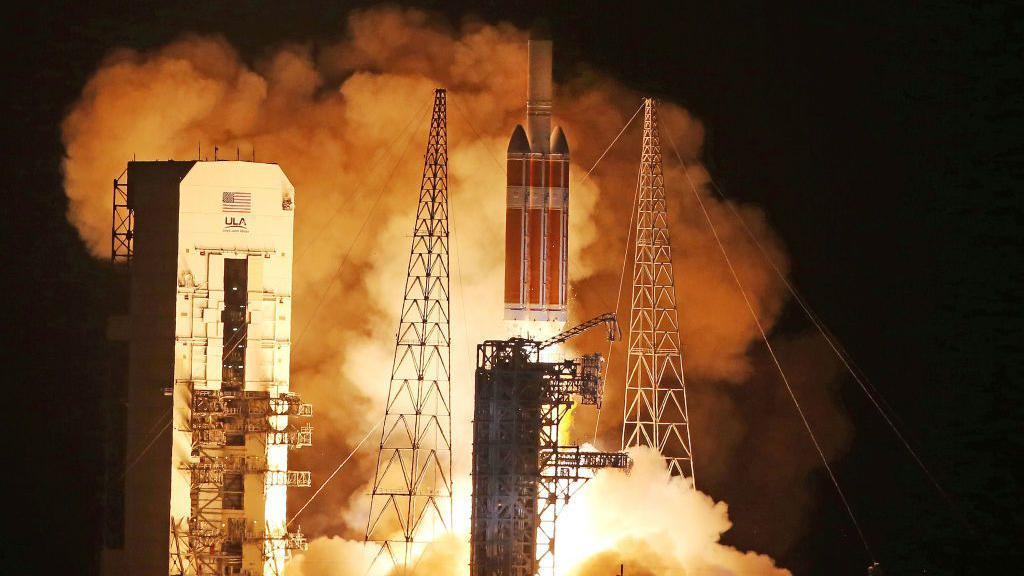Nasa spacecraft makes history with closest-ever fly-by of the Sun

- Published
Nasa says its Parker Solar Probe is safe and "operating normally" after making history on Christmas Eve by flying closer to the Sun than any other spacecraft.
According to the US Space Agency, the probe came within 3.8 million miles of the Sun's surface while moving at more than 400,000 miles per hour.
It's thought the burning hot fly-by meant the spacecraft experienced temperatures of nearly 1000 Celsius.
Nasa hopes the probe could help us to better understand how the Sun works and forecast future space-weather events.
More space news
Space 2025: What are the big events to look out for?
- Published21 December 2024
Massive black hole spotted taking a 'nap' in the early universe
- Published20 December 2024
Astronaut snaps picture of dwarf galaxies from the ISS
- Published16 December 2024
What's the latest?

Nasa launched the Parker Solar Probe in August 2018
Nasa's Parker Solar Probe has already swept past the Sun 21 times, slowly getting ever nearer, but its Christmas Eve visit was record-breaking.
The US Space agency confirmed that the spacecraft made history with its closest-ever approach to our star.
It travelled within 3.8 million miles of the Sun's surface while moving at 430,000 miles per hour.
Its super speedy journey means that the Parker Solar Probe has also become the fastest-moving human-made object in space.
At that speed you could fly from London to New York in less than 30 seconds.
Nasa said that the probe likely experienced temperatures of up to 982 Celsius as it flew into the Sun's outer atmosphere.
The probe was out of communication for several days during its fly-by but Nasa says they've now received a signal from it and added that the probe is safe and working normally.
What is Nasa's Parker Solar Probe aiming to do?

The Parker Solar Probe was launched in 2018 and is attempting to study the outermost part of the Sun, called the corona, in order to find out how it was formed.
The Sun is the only star we can study up close. So, by learning more about it, the idea is that we can find out more about other stars throughout the universe.
The probe is around the size of a small car, and it was specially designed to withstand extreme heat that no craft has ever experienced before.
It is protected by an 11.5cm thick carbon-composite shield which will help inside the probe stay around room temperature - despite it being MUCH hotter on the outside.
The probe is also recording important information about the Sun's plasma and magnetic fields - especially how they are related to its solar winds.
Scientists say any information they can gather will help predict patterns in the weather in the future.
